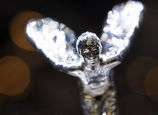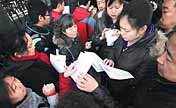
ELECTRIC buses that were used during the 2010 Shanghai World Expo will replace some traditional city buses on short routes starting next month.
The city bus operator said 120 electric buses, which were later used as tourist shuttles, will gradually be put into use. The new-energy buses have a life span of about eight years.
The No. 23 and No. 939 bus routes will be the first, and will use 80 such vehicles. The rest will be used on the No. 36 route by May, the operator said.
The electric buses' batteries have limitations, said Ren Jingchun, general manager with Shanghai Bashi Electric Bus Co. The battery needs to be changed about every four to five years.
A new battery will last for up to 80 kilometers before charging, but after three years, it's good for only about 60 to 65 kilometers per charge. That restricts the length of routes that a bus can serve, and the battery needs recharging about every two rides, Ren said.
The cost of replacing a battery set on one bus is relatively high, about 1.1 million yuan (US$176,765), which keeps that type of bus from being used more widely.
The bus operator is also upgrading its super capacitor buses to carry more passengers, signaling a new round of technological progress in clean-energy vehicles.
New, lighter capacitors allow for the increase in passenger capacity, said officials.
The buses, however, have been dogged by problems like relatively short power endurance and high maintenance costs.
An electric bus costs more than 2 million yuan, with annual maintenance at around 500,000 yuan. The charging stations also are expensive.
When bus drivers have access to charging points at bus stops, traffic jams often build up behind them.
Authorities also said shuttle buses will open in five districts to link to five subway lines - 2, 5, 8, 9 and 11 - for heavy traffic that is expected to occur during the Qingming Festival, or tomb-sweeping day, on April 4.


















![]()
